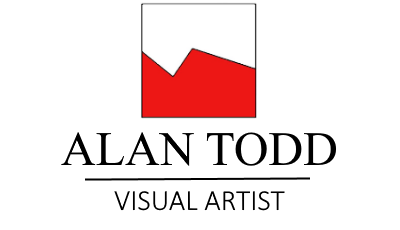There has long been a belief that active or passive exposure to the Arts, and particularly the visual arts, as manifestations of human intellectual achievement, can shape the ideas, customs, social behaviour and culture of a particular people or society. In ancient Greek times there was a hope that art and democracy would go hand in hand. Art was to be the physical manifestation of civilisation and the way to advance civilisation was to promote specific ideals of beauty and have them openly discussed. The Forum provided opportunities for every voice to be heard in theory. The internet, in the form of social media and universal access to information, has been touted as the ultimate tool of democracy, much as was television at its outset, and the expectation was both a solidifying cultural influence and a broadening of attitudes and curiosity. Too often that expectation was soured as politicians saw TV as a means of propaganda and exploitation. The internet can also be a source of propaganda and the 21st century phrase ‘cultural producer’ presumes that the creation of content via social media will engender experiences that go beyond physical art objects and shape the thinking and cultural attitudes of the broader audience. It parallels the rise of the influencer within social media and measures success through degrees of audience engagement. When the average audience retention rate for any website is less than thirty seconds the question remains as to what extent social media is useful to the visual artist and what, if any, cultural impact ensues.
While the term cultural producer may be new there is nothing new about the idea. Renaissance artists, as paid arms of the church and aristocracy, on the one hand sought to promote a world beyond death that underpinned the power base of the Catholic church, and on the other to display the material worth and power of individuals. The court of Louis X1V for its part aimed to influence every aspect of culture from architecture to fashion. The difference though is that while the thinking in those historical periods was in terms of influence over lifetimes, if not centuries, 21st century art exists in an ever-changing cultural landscape where the measure of cultural influence in a broader sense is debatable. The sweep of possible influence has certainly broadened through social media but even with the current extent of a potential audience, the only defining factor at play is not the artist but the medium.
Art, like democracy, was about freedom of expression. In his essay Art and Democracy, written in 1945, Sir Kenneth Clark concluded that art was ‘incurably aristocratic’, and ‘an example of the rule of the many by the few’. When Art is about an individual vision imposed on the world and diversity of representation is not just expected but promoted, a few great works may be produced but the vast number will be insignificant. No work of art worth looking at has ever been created by committee and the thrust of contemporary democratic societies is towards cheapness and utility with art just another commodity subject to market forces, making the production of great art an exception. Artists could be seen as benign despots but the quasi-mystical justifications of much contemporary art brings out the paradox of democracy in art – it cannot ensure that good art will be produced no matter how far and wide it is spread and using it to define culture begs the question of who’s culture.
Traditionally, artists have focused on creating physical art intended for display in museums or sale in galleries, producing self-contained art objects that can be sold or exhibited in traditional spaces. This has meant artists aligning their creations with market trends and gallery expectations of style, size and in the case of commercial galleries, potential profitability as decreed by a gallery owner. Being a successful artist has inevitably relied upon the same market forces and marketplaces as apply to any commodity. However, the question remains as to just how valid or effective the physical gallery or the wider digital marketplace is in either promoting or selling work to say nothing of establishing ‘culture’. The pressure to constantly produce content and maintain an online presence for instance, reduces art to a superficial cultural commentary catering for diminishing online attention spans. On the other side of the scale is the ever-expanding media presence promoting anything and everything to find ways of spending the culture dollar from streaming services to live and prerecorded sport. In many ways the artist as cultural producer reflects a disillusionment with the traditional art market and gallery system, leaving the artist to manage their influence on culture and society largely though digital platforms. While social media and digital platforms have democratized art there are also concerns raised about the loss of critical distance when artists become influencers. The key challenge for artists today is how to engage with the wider culture while maintaining a critical perspective. Measuring the success of cultural impact, audience engagement and social influence inevitably comes down to sales for validation which blurs lines between art, media and the retail market.
The internet has democratised access to the visual arts but is the result an advance in culture or has it reduced culture to its lowest common denominator – the equivalent of Reality TV. There is no doubt that today there are more practicing artists than in the whole of art history and the whole of art history is available to everyone but as with physical galleries it is a question of who actually visits for longer than thirty seconds. Artists support other artists via Instagram and gallery openings but that critical elite is small and while ‘cultural influencers’ may well have hordes of followers, this is culture with a small C.
